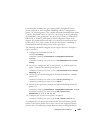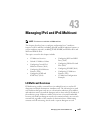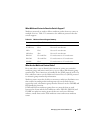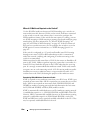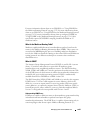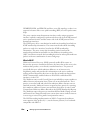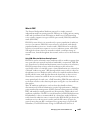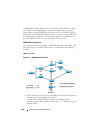
Managing IPv4 and IPv6 Multicast 1337
43
Managing IPv4 and IPv6 Multicast
This chapter describes how to configure and monitor layer 3 multicast
features for IPv4 and IPv6, including global IP and IPv6 multicast features as
well as multicast protocols, including IGMP, DVMRP, and PIM for IPv4 and
MLD and PIM for IPv6.
The topics covered in this chapter include:
L3 Multicast Overview
IP Multicasting enables a network host (or multiple hosts) to send an IP
datagram to multiple destinations simultaneously. The initiating host sends
each multicast datagram only once to a destination multicast group address,
and multicast routers forward the datagram only to hosts who are members of
the multicast group. Multicast enables efficient use of network bandwidth
because each multicast datagram needs to be transmitted only once on each
network link, regardless of the number of destination hosts. Multicasting
contrasts with IP unicasting, which sends a separate datagram to each
NOTE: This feature not available on N2000 switches.
• L3 Multicast Overview
• Default L3 Multicast Values
• Configuring General IPv4
Multicast Features (Web)
• Configuring IPv6 Multicast
Features (Web)
• Configuring IGMP and
IGMP Proxy (Web)
• Configuring MLD and MLD
Proxy (Web)
• Configuring PIM for IPv4 and
IPv6 (Web)
• Configuring DVMRP (Web)
• Configuring L3 Multicast
Features (CLI)
• L3 Multicast Configuration
Examples



